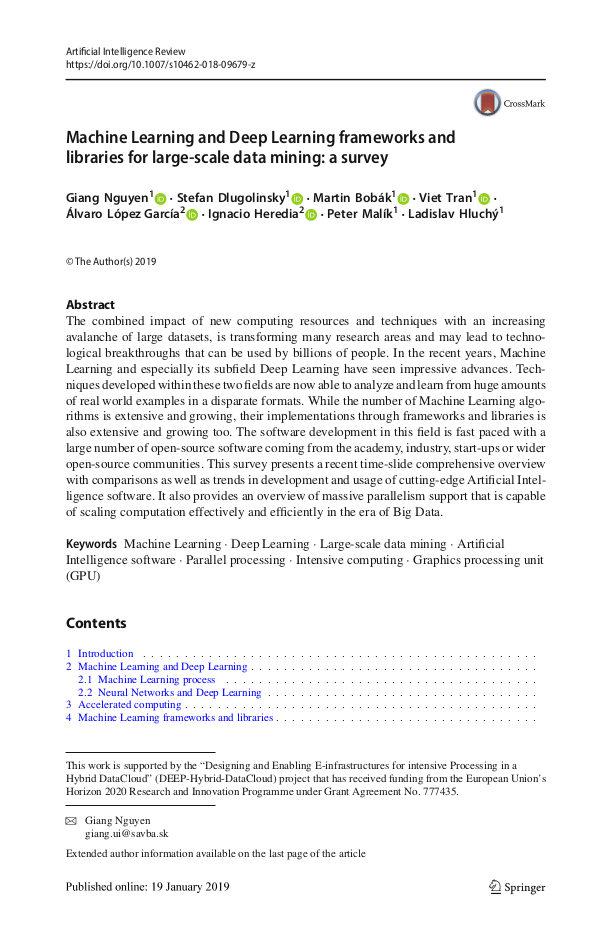We are thrilled to announce that we have published a new paper entitled “A Cloud-Based Framework for Machine Learning Workloads and Applications” on IEEEXplore.
The paper, that is published as Open Access and can be downloaded downloaded following its doi: 10.1109/ACCESS.2020.2964386, is authored by Álvaro López García, Jesús Marco de Lucas, Marica Antonacci, Wolfgang Zu Castell, Mario David, Marcus Hardt, Lara Lloret Iglesias, Germán Moltó, Marcin Plociennik, Viet Tran, Andy S. Alic, Miguel Caballer, Isabel Campos Plasencia, Alessandro Costantini, Stefan Dlugolinsky, Doina Cristina Duma, Giacinto Donvito, Jorge Gomes, Ignacio Heredia Cacha, Keiichi Ito, Valentin Y. Kozlov, Giang Nguyen, Pablo Orviz Fernández, Zdeněk Sustr and Pawel Wolniewicz from Institute of Physics of Cantabria (CSIC-UC), Laboratory of instrumentation and experimental particle physics from Lisbon, INFN Bari, INFN CNAF, Poznan Supercomputing and Networking Center, Karlsruhe Institute of Technology, Instituto de instrumentación para la imagen molecular (i3m) from the Universitat politècnica de València, Slovak academy of sciences, Institute of informatics (IISAS), Helmholtz Zentrum München and CESNET.
Abstract: In this paper we propose a distributed architecture to provide machine learning practitioners with a set of tools and cloud services that cover the whole machine learning development cycle: ranging from the models creation, training, validation and testing to the models serving as a service, sharing and publication. In such respect, the DEEP-Hybrid-DataCloud framework allows transparent access to existing e-Infrastructures, effectively exploiting distributed resources for the most compute-intensive tasks coming from the machine learning development cycle. Moreover, it provides scientists with a set of Cloud-oriented services to make their models publicly available, by adopting a serverless architecture and a DevOps approach, allowing an easy share, publish and deploy of the developed models.



